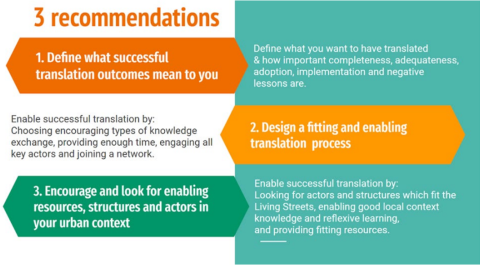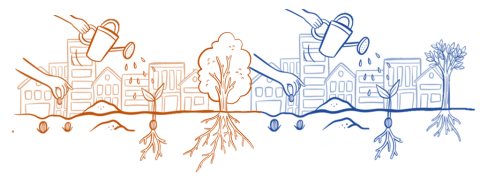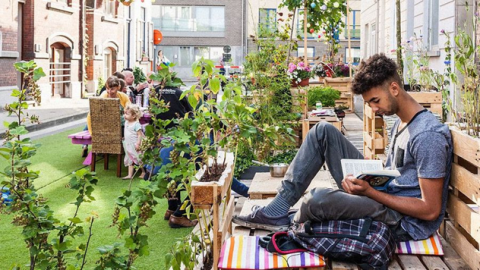What are Living Streets?
Various Living Streets have come into existence across Europe. The Living Streets (Leefstraten) founded in Ghent were transition experiments in which different local actors envisioned desirable streets of the future, reinforced social interactions and experimented with sustainable mobility. In Antwerp, Living Streets (Tuinstraten) have created focused on co-creatively maximizing green and blue infrastructure. In Rotterdam, Living Streets (Droomstraten/Stoepgroepen) aim to co-create green and human-centered street designs connected to city’s livability policy and park developments. Each of these translations, including the model below, are characterized by similar but also different aspects of Living Streets. All these translations and aspects can be considered when creating your own Living Street
In order to ease the translation of Living Streets to other urban contexts, three recommendations are shared.
The first recommendation is to consider what successful translation outcomes entail. This includes choosing which aspects from existing Living Streets are wished to be translated. It also entails considering whether the adoption of Living Streets or the gaining of negative lessons about what does not work in your context is deemed sufficient, or whether implementation (the putting into reality) of Living Streets is desired.
The second recommendation is to design a translation process that enables the wished translation outcomes. Boosts include involving all key actors in the translation process and foreseeing enough time for the process. Also, live and in-depth types of knowledge exchange and participating in a related city network project might work encouraging.
The third recommendation is to look for resources, structures and actors in your context which enable the wished translation outcomes. For a successful outcome, it is helpful that the aspects you want to translate fit with your city’s actors and the built environment, policy, socio-economic or cultural structures. Also, good local context knowledge and reflexive learning of actors stimulate adequate translation of the Living Streets to the new context. Finally, sufficient and fitting resources must be present to translate, adopt and implement the Living Streets successfully.
Hopefully, these insights have planted a seed and inspired you to contribute to well-rooted and unique Living Streets. If you would like to read more about Living Streets and the recommendations, the extended version of this news item can be found here: Go to full version.




